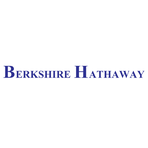HP's Earnings Dive Amid Tariff Turmoil: A Wake-Up Call for Investors
May 30, 2025, 9:35 am

Location: United States, Nebraska, Omaha
Employees: 10001+
Founded date: 1839
Total raised: $1.9B

Location: United States, North Carolina, Charlotte
Employees: 10001+
Founded date: 1998
Total raised: $2M
HP Inc. is feeling the heat. The tech giant recently reported a significant earnings miss, sending its stock tumbling 15%. The culprit? U.S. tariffs and rising production costs. This situation is a stark reminder of how global trade policies can ripple through corporate earnings like a stone thrown into a pond.
In the second quarter, HP posted revenue of $13.22 billion, slightly above analysts' expectations of $13.14 billion. However, the earnings per share (EPS) fell short, coming in at 71 cents, while analysts had anticipated 80 cents. This mismatch sent shockwaves through the market, leading to a sharp decline in HP's stock price.
The company’s net income dropped to $406 million, or 42 cents per share, down from $607 million, or 61 cents per share, a year earlier. This decline paints a grim picture of HP's financial health, raising questions about its future trajectory.
HP's guidance for the third quarter is equally concerning. The company expects adjusted earnings between 68 cents and 80 cents per share, falling short of the average analyst estimate of 90 cents. For the full year, HP anticipates adjusted earnings between $3.00 and $3.30 per share, while analysts were looking for $3.49. This widening gap between expectations and reality is a red flag for investors.
The root of HP's troubles lies in the current U.S. tariff landscape. The company explicitly stated that its outlook reflects the "added cost driven by the current U.S. tariffs." These tariffs have created a perfect storm, increasing production costs and squeezing profit margins. HP's CEO, Enrique Lores, acknowledged the challenges posed by the regulatory environment, but he also emphasized the company's proactive measures to mitigate these costs.
In response to the tariff-induced pressures, HP is shifting its manufacturing strategy. The company has ramped up production in countries like Vietnam, Thailand, India, Mexico, and the U.S. By the end of June, HP aims to have nearly all its products sold in North America manufactured outside of China. This pivot is a strategic move to dodge the tariff bullet and regain control over costs.
However, the effectiveness of these measures remains to be seen. Lores expressed optimism, stating that HP expects to fully mitigate the increased trade-related costs by the fourth quarter. But optimism is a fragile thing in the world of business. Investors will be watching closely to see if HP can deliver on these promises.
The market's reaction to HP's earnings report reflects a broader sentiment among investors. Confidence is a fickle friend, easily swayed by news and numbers. The recent surge in consumer confidence, driven by hopes for trade peace between the U.S. and China, adds another layer of complexity to the situation. The Conference Board's Consumer Confidence Index jumped to 98.0 in May, a significant increase from April. This optimism is rooted in the recent halting of severe tariffs, which has sparked hopes for a more stable economic environment.
Yet, the dichotomy between HP's struggles and rising consumer confidence highlights the uncertainty that permeates the market. While consumers may feel more optimistic, companies like HP are grappling with the harsh realities of global trade dynamics. The optimism reflected in consumer sentiment may not translate into corporate success, especially for those heavily impacted by tariffs.
The labor market also plays a crucial role in shaping consumer confidence. A recent survey indicated that more respondents expect job availability to improve in the coming months. However, the overall sentiment remains mixed, with a significant portion of respondents still perceiving job scarcity. This ambivalence can create a volatile environment for businesses, as consumer spending is closely tied to employment perceptions.
As HP navigates these turbulent waters, investors must remain vigilant. The company's ability to adapt to changing market conditions will be critical. The shift in manufacturing locations is a step in the right direction, but it requires time and execution. Investors should weigh the potential benefits against the backdrop of ongoing trade tensions and economic uncertainty.
In conclusion, HP's recent earnings miss serves as a cautionary tale for investors. The impact of tariffs is not just a headline; it’s a reality that can alter a company's financial landscape. As HP strives to regain its footing, the interplay between consumer confidence, trade policies, and corporate performance will be crucial. The road ahead may be rocky, but for those willing to navigate the complexities, opportunities may still lie ahead.
In the second quarter, HP posted revenue of $13.22 billion, slightly above analysts' expectations of $13.14 billion. However, the earnings per share (EPS) fell short, coming in at 71 cents, while analysts had anticipated 80 cents. This mismatch sent shockwaves through the market, leading to a sharp decline in HP's stock price.
The company’s net income dropped to $406 million, or 42 cents per share, down from $607 million, or 61 cents per share, a year earlier. This decline paints a grim picture of HP's financial health, raising questions about its future trajectory.
HP's guidance for the third quarter is equally concerning. The company expects adjusted earnings between 68 cents and 80 cents per share, falling short of the average analyst estimate of 90 cents. For the full year, HP anticipates adjusted earnings between $3.00 and $3.30 per share, while analysts were looking for $3.49. This widening gap between expectations and reality is a red flag for investors.
The root of HP's troubles lies in the current U.S. tariff landscape. The company explicitly stated that its outlook reflects the "added cost driven by the current U.S. tariffs." These tariffs have created a perfect storm, increasing production costs and squeezing profit margins. HP's CEO, Enrique Lores, acknowledged the challenges posed by the regulatory environment, but he also emphasized the company's proactive measures to mitigate these costs.
In response to the tariff-induced pressures, HP is shifting its manufacturing strategy. The company has ramped up production in countries like Vietnam, Thailand, India, Mexico, and the U.S. By the end of June, HP aims to have nearly all its products sold in North America manufactured outside of China. This pivot is a strategic move to dodge the tariff bullet and regain control over costs.
However, the effectiveness of these measures remains to be seen. Lores expressed optimism, stating that HP expects to fully mitigate the increased trade-related costs by the fourth quarter. But optimism is a fragile thing in the world of business. Investors will be watching closely to see if HP can deliver on these promises.
The market's reaction to HP's earnings report reflects a broader sentiment among investors. Confidence is a fickle friend, easily swayed by news and numbers. The recent surge in consumer confidence, driven by hopes for trade peace between the U.S. and China, adds another layer of complexity to the situation. The Conference Board's Consumer Confidence Index jumped to 98.0 in May, a significant increase from April. This optimism is rooted in the recent halting of severe tariffs, which has sparked hopes for a more stable economic environment.
Yet, the dichotomy between HP's struggles and rising consumer confidence highlights the uncertainty that permeates the market. While consumers may feel more optimistic, companies like HP are grappling with the harsh realities of global trade dynamics. The optimism reflected in consumer sentiment may not translate into corporate success, especially for those heavily impacted by tariffs.
The labor market also plays a crucial role in shaping consumer confidence. A recent survey indicated that more respondents expect job availability to improve in the coming months. However, the overall sentiment remains mixed, with a significant portion of respondents still perceiving job scarcity. This ambivalence can create a volatile environment for businesses, as consumer spending is closely tied to employment perceptions.
As HP navigates these turbulent waters, investors must remain vigilant. The company's ability to adapt to changing market conditions will be critical. The shift in manufacturing locations is a step in the right direction, but it requires time and execution. Investors should weigh the potential benefits against the backdrop of ongoing trade tensions and economic uncertainty.
In conclusion, HP's recent earnings miss serves as a cautionary tale for investors. The impact of tariffs is not just a headline; it’s a reality that can alter a company's financial landscape. As HP strives to regain its footing, the interplay between consumer confidence, trade policies, and corporate performance will be crucial. The road ahead may be rocky, but for those willing to navigate the complexities, opportunities may still lie ahead.
